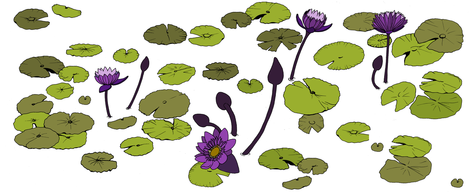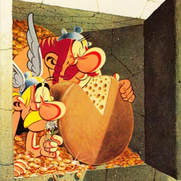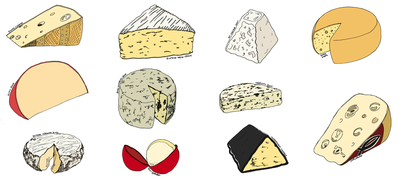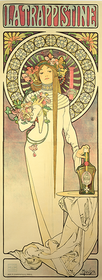I love MS Paint. There, I said it.
I spend a lot of time and energy defending my preference for MS Paint to edit and colour my images. I know, I know – I could get much greater depth of colour and realism with other applications that are designed to reduce the labour and simplify the process. But the thing is, the process is part of the pleasure – and I am already a really fast worker. The MS Paint stage of my drawing is my form of meditation – I can’t distract myself enough any other way than by focusing on those pesky pixels.
This guy gets it!
This guy gets it!
I suppose part of my liking for Paint is the way I get the nice, flat colours, reminiscent of gouache. And the reason that those effects appeal to me lies in my upbringing.
Bandes dessinées
I grew up in Switzerland, New Zealand, and Belgium. As a result, I speak fluent French – and I have a passion for BDs (Bandes dessinées, or ‘drawn strips’). They’re not quite the same as ‘comics’ – which by their very name imply a humourous subject matter – and they have been treated as a much more serious art form. Many of the stories contained more layers than their translations, too, so it’s very hard to explain the cleverness of, for example, Astérix, to someone who has only read it in the dumbed-down English translation.
Ligne Claire
As expected, my style was strongly influenced by the BDs that surrounded me as I grew up, particularly Hergé and his ligne claire or ‘clear line’ drawing style. My standard drawing technique is to sketch in pencil then finalise and refine the design in pen, which is a very common sketch artist’s technique. I then use flat colour to give my images life. I rarely use shading of any sort, and I strongly object to cross-hatching.
Alphonse Mucha and Art Nouveau
Another great influence on my style is the advertising artwork of Mucha. His strong, clear linework, and effective use of colour lends itself really well to stained glass – and the bold lines and organic shapes appealed to my ‘ligne claire’-influenced brain. Art Nouveau’s simple, beautiful complexity has meant that the style is still very much current today – people are still working in their own versions of the Art Nouveau style, and its enduring popularity suggests they are likely to continue to do so.
Functional Graphics
I have trouble categorising myself as an ‘artist’, because what I create isn’t truly art for its own sake. I draw because the drawing will be useful – just as Alphonse Mucha drew to make posters, and BD illustrators draw to support a storyline, I draw because my images will become something more than lines on a page. They will be made into fabric designs, and printed to be sewn into all manner of useful and decorative things; they will be made into jewellery, to gladden hearts and add quirks to any outfit; they can be printed onto clothing and accessories to make a statement or bring a smile to a stranger’s face. I draw for practical reasons, and my drawings are always intended to be used. I suppose, rather than ‘art’, I would call what I do ‘functional graphics’.
So, what is my process?
I start with a piece of blank A4 and a pencil, and I scribble the basic outline. If I like it, I go over it in detail with the pencil, then again with my black marker. I rub out the pencil lines, then scan the image in crisp black and white.
Once the image is scanned, I take it down to monochrome bitmap, to be sure to clean out any residual mess, and then save it as a full-colour bmp file, and start colouring. Once I have the individual elements of a design finished and coloured, I combine them into a single layout. I manually create and test the repeat until I am happy with it, then paste it over a variety of backgrounds, to create additional designs in the series. These designs are then uploaded to Spoonflower and printed as fabrics. I also make variations on each design to be printed as clothing and accessories on Redbubble (depending on the design, this can required up to 5 different versions of the same illustration per design page), and to print and use for jewellery.
Once the image is scanned, I take it down to monochrome bitmap, to be sure to clean out any residual mess, and then save it as a full-colour bmp file, and start colouring. Once I have the individual elements of a design finished and coloured, I combine them into a single layout. I manually create and test the repeat until I am happy with it, then paste it over a variety of backgrounds, to create additional designs in the series. These designs are then uploaded to Spoonflower and printed as fabrics. I also make variations on each design to be printed as clothing and accessories on Redbubble (depending on the design, this can required up to 5 different versions of the same illustration per design page), and to print and use for jewellery.
Once the designs are finished, I release them into the world, and they hopefully give others the pleasure that they have given me to create. You can pop over to my design collection homepage to see which of my designs are available to brighten up your home.














